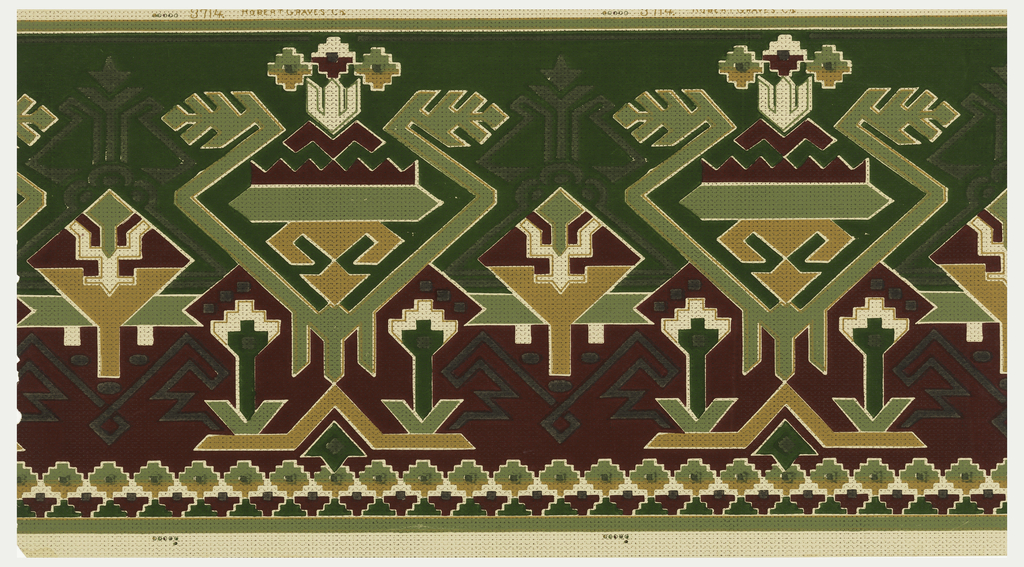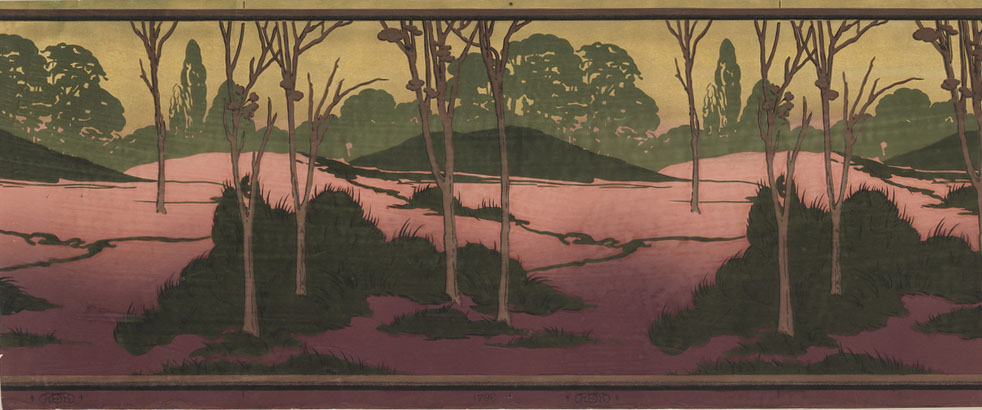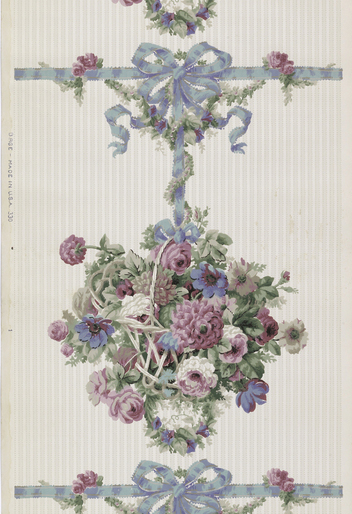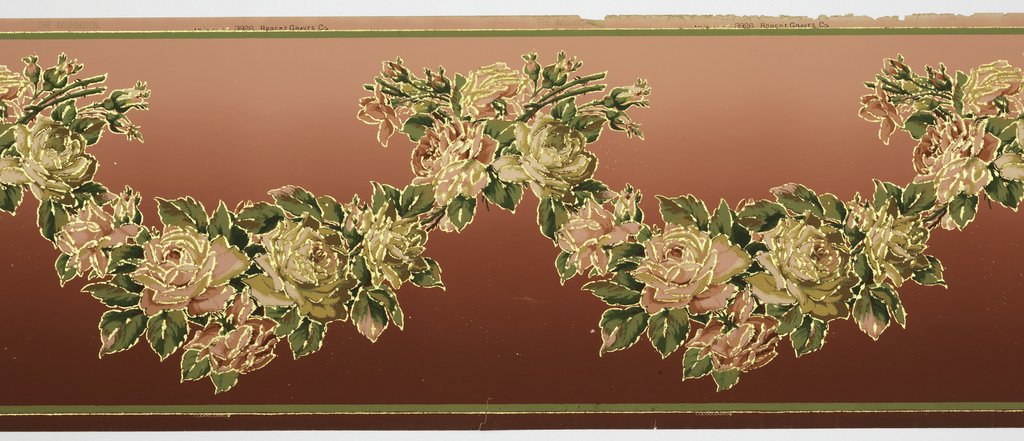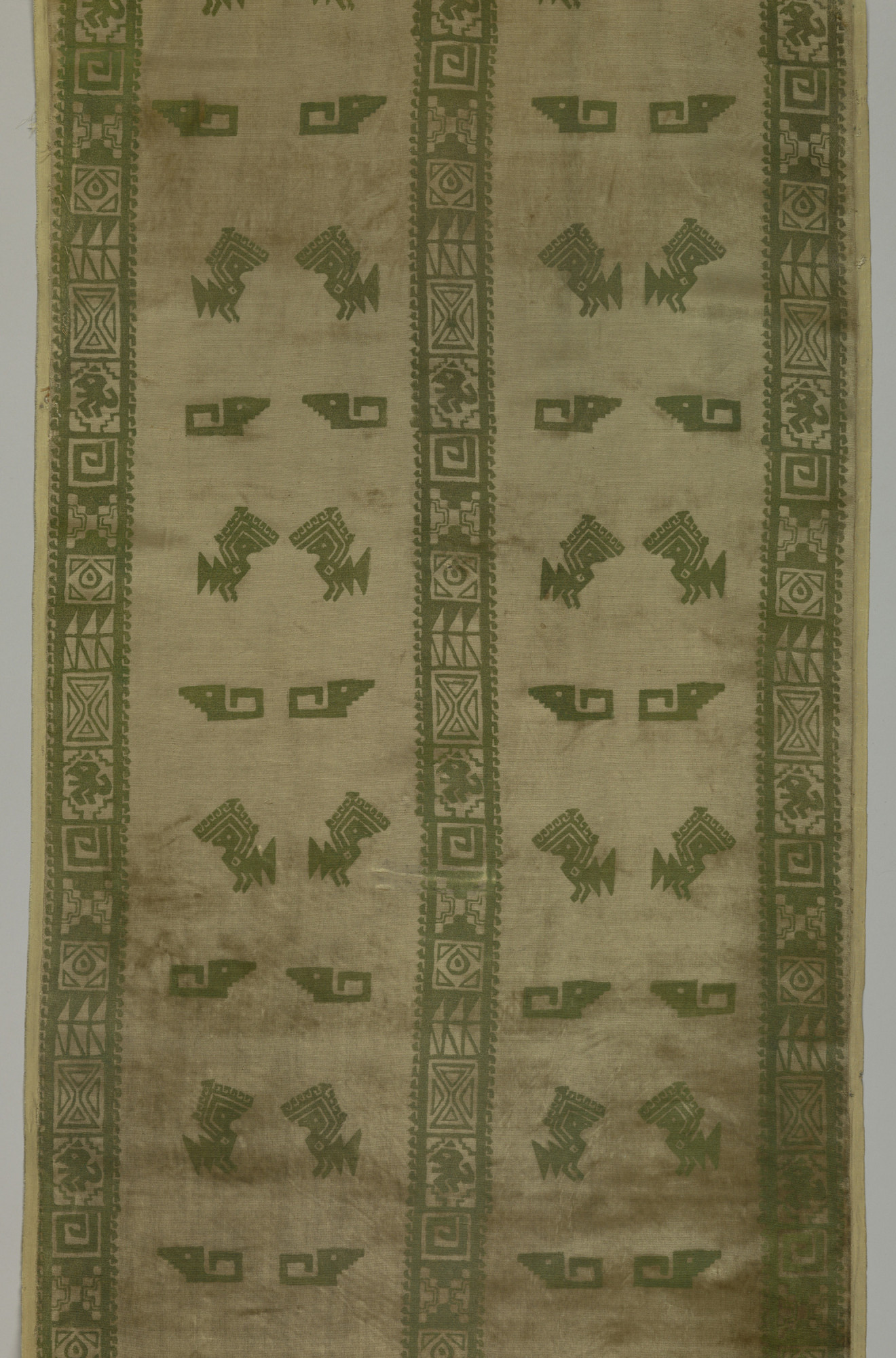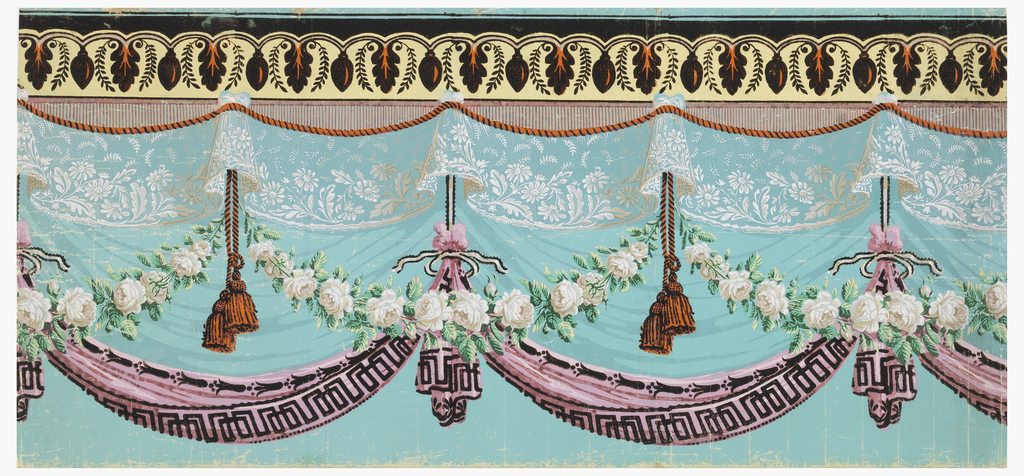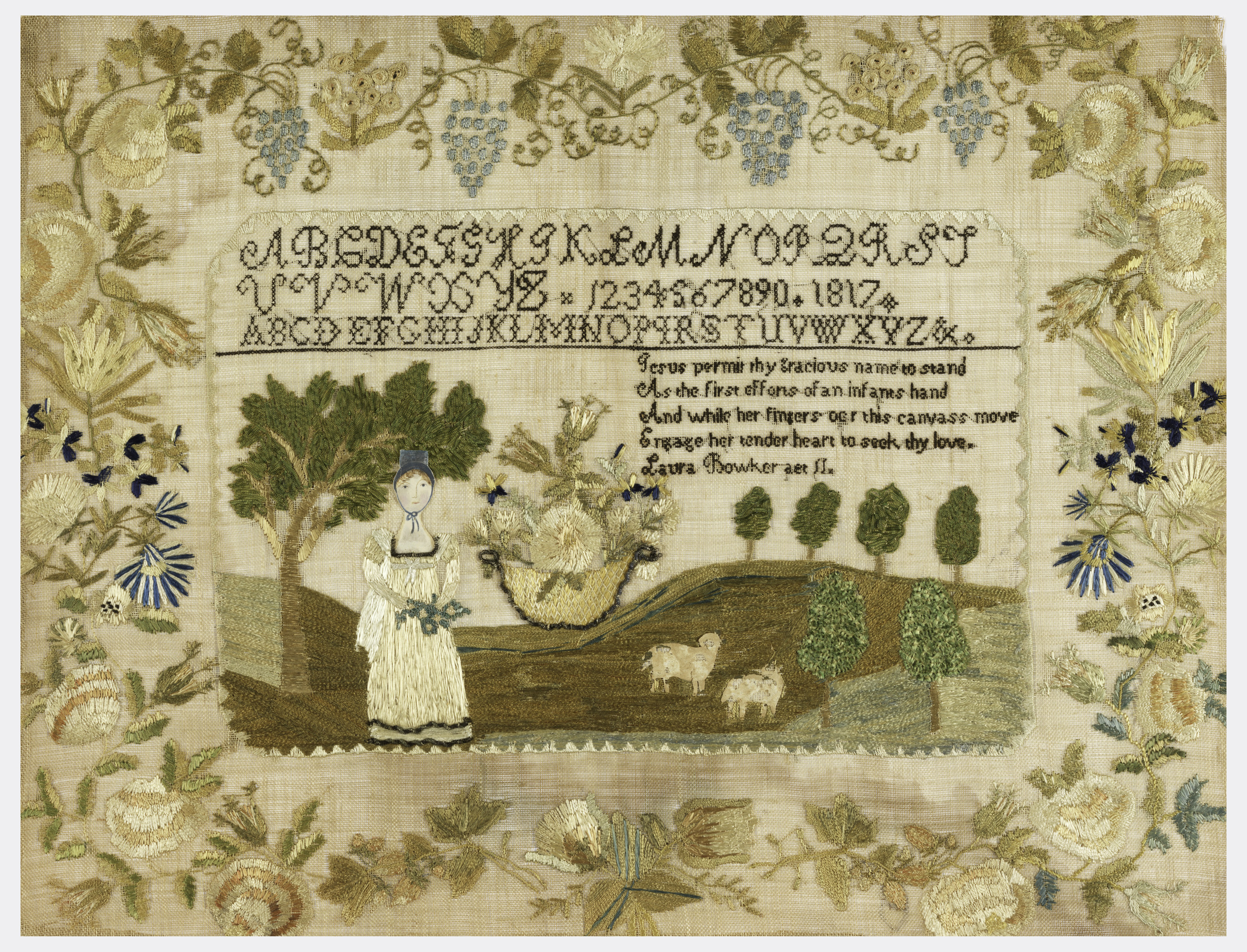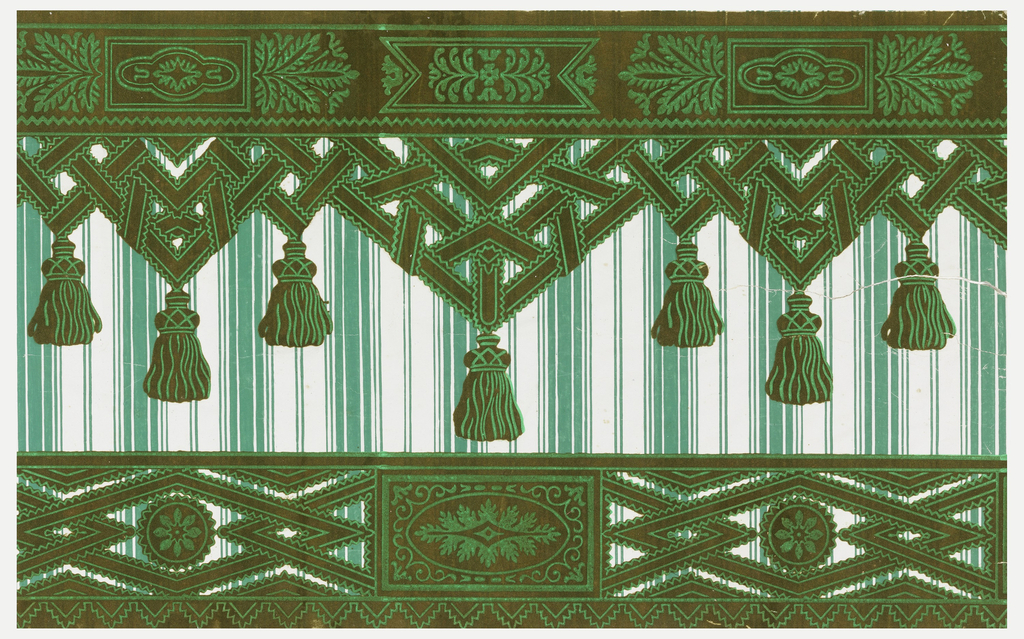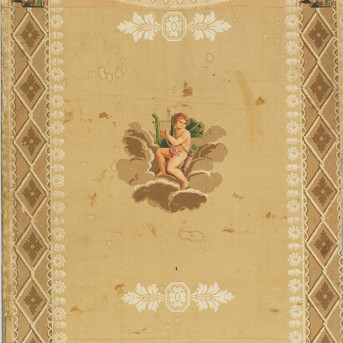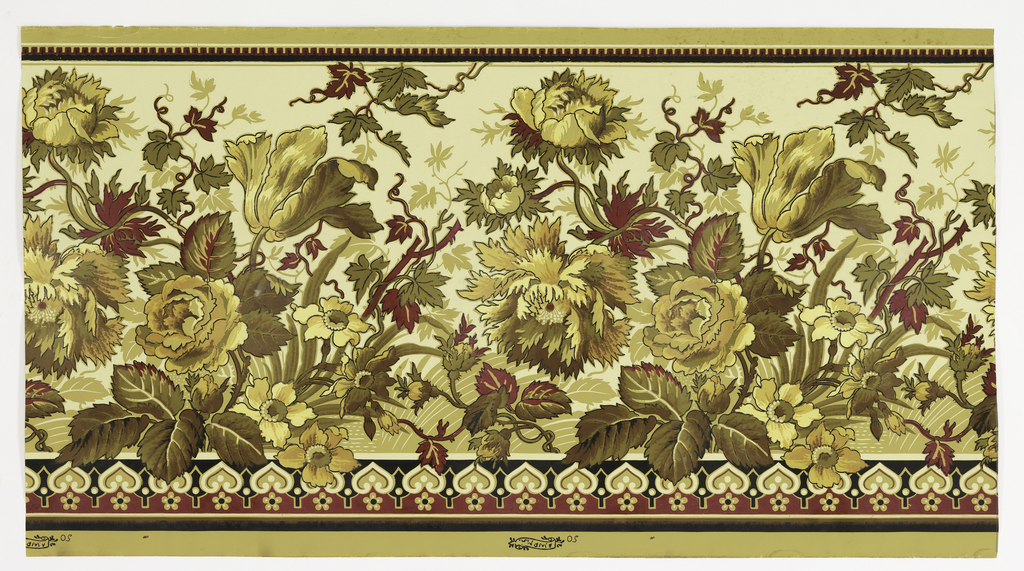This frieze by the New York-based Robert Graves Co. is an excellent example of the use of Native American motifs in American design at the turn of the century. Though this was an age that saw an unprecedented suppression of native culture, Native American art itself saw an unprecedented wave of appreciation and praise, particularly...
I have always been fond of landscape friezes and I sometimes wish I lived in a nice bungalow where I could actually use some of these different wall treatments to best effect. I’ve probably mentioned before that wide landscape friezes were popularized by Walter Crane when he introduced his May Tree frieze in 1896, and...
Excerpt from Teddy Cruz and Fonna Forman’s essay “Where is the Public Today? Design for a New Civic Imagination” from By the People: Designing a Better America exhibition publication. Border Crossing Design by the people begins with re-energizing a public culture and building the capacity of divided communities for mutual recognition and coexistence. The San...
A coffee pot, a water pump, a cast iron stove, and fish are just some of the things scattered along the length of this border. They are done in a strong graphic style, and they float haphazardly against a collection of irregular polygons in yellow, green, brown, and red, the same colors used to highlight...
This frieze represents a very late example of the English Regency style in wallpaper. The Regency style is largely connected to the period between 1800-1830 and is considered the final development of English Neoclassicism, the dominant design style in Britain for most of the late 18th-century and early-19th century. The date of this paper places...
I find these hanging baskets rather a novel idea in home decoration. These are used in place of the wide friezes that became popular in the very late years of the nineteenth century. Wide friezes were printed on the paper in a horizontal fashion, which makes perfect sense as that is how they were hung....
The unstructured nature of this family register sampler, initialed “SS” and attributed to Sally Sacket (b. 1786), is typical of eighteenth-century examples. In contrast to the more organized genealogy samplers that appear after 1800, the text here is run together in continuous lines. Sally’s sampler is one of a group of three Westfield, Massachusetts, examples...
Robert Graves Co. was founded by a Brooklyn-based Irish immigrant, and was one of the most successful wallpaper manufacturies in the United States from the 1860s to the 1920s. This wallpaper frieze was made by the company c. 1905-1915, and would likely have been marketed with a coordinating sidewall and ceiling paper. It features a...
In 1972 Cooper Hewitt received a bequest of textiles from New York City architect and artist Julian Clarence Levi (American, 1874-1971). It mainly was comprised of French and Indonesian textiles, but also included two unusual velvet panels printed with pre-Columbian bird motifs and other forms. The design itself is rather simple and contains two vertical...
Traditionally, wallpapers have imitated more expensive materials, such as architectural details, painted wall decorations, wood grains, marble, and, most often, textiles. In the mid-18th century when wallpapered rooms became a prevailing fashion in England and France, wallpaper borders were as important a decorative element as the coverings themselves. A brilliant swag of printed paper flowers,...
This sampler, made by Laura Bowker (1805-1843), is part of a small group of pictorial samplers worked by girls from Fitzwilliam, New Hampshire. Each of the charming works features a woman standing in a pastoral setting with trees, rolling hills, a pair of lambs, and an oversized basket of flowers. These bonneted ladies hold bouquets...
Elinor Merrill was the pre-eminent New York dealer of antique European textiles and wallcoverings. A specialist in French textiles, Merrill served as a consultant to the Metropolitan Museum of Art and to the Art Institute of Chicago. She also assisted in the development of the collections of the Cooper Hewitt and the Winterthur museums. After...
This lovely nineteenth-century panel is a testament to the Hewitt sisters’ affinity for fine French wallpapers, and perfect for those who wish everyday was St. Valentine’s Day. It was block printed on handmade paper c.1810, just a few decades before continuous roles of machine-made paper became the industry standard. The top edge of the paper...
A rather severe group of peonies, roses and other flowers grow with grape vines in a tangled mass on this wallpaper frieze of the late-nineteenth century. Dark outlines and blocky coloring causes the blossoms to appear stylized and two-dimensional. Instead of subtle shading, the illusion of depth is created by overlapping the floral elements. The...
This neo-classical wallpaper frieze is a broad horizontal band meant to decorate a wall near the ceiling. I was immediately drawn to the three-dimensional quality of the block-print, as well as the intricate details that can be seen in the wings, imagery on the urn, and adornments on the confronted figures. The various Greek and...
